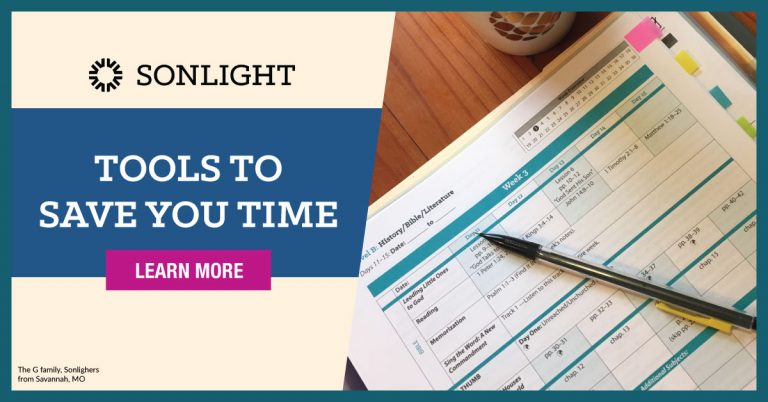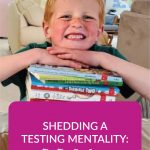
Spelling tests on Friday, language tests every other Friday, math tests after each unit (usually landing on Friday somehow), science test after each unit (also on Friday)....
If your school experience was like mine, Fridays were usually test days.
In addition to regular, routine tests and quizzes, public schools administer yearly standardized testing, too. In some schools, teachers can spend significant time teaching how to take standardized tests, how to get high scores on those tests, and how to manage stress and anxiety during testing times.
Public school students become accustomed to plenty of testing.
Why Do Public Schools Test So Much?
In a class of 25, it's impossible for a teacher to constantly monitor which skills each student knows without widespread testing. Routine assessments allow teachers to pinpoint exactly where a child is on the learning spectrum. If her class is consistently low in a particular skill, she will be able to adjust her instruction to cover those weak skills. Testing also allows teachers to concretely communicate with parents about how their child is performing in class.
On a larger scale, standardized testing can give schools a picture of how they are doing in comparison to other schools in the nation. This can help schools to identify weak areas and address them. Standardized testing can also help a student’s parents to see weaknesses and strengths and stay informed on their child’s progress without being right beside them all day.
These are a few valid reasons that public schools use a lot of traditional testing methods.
Why Should Homeschoolers Shift Their Mindset on Testing?
Homeschoolers should shift their mindset on testing methods because homeschooling is a totally different method of educating.
Homeschoolers have significantly lower teacher-to-student ratios. In addition, homeschool parents are even more invested than teachers in the endeavor of educating because they are educating their own child. Finally, most homeschoolers use a curriculum that is already developed from beginning to end, so they are constantly building on concepts. If homeschoolers stick with one curriculum company throughout their schooling, they can be fairly certain that there will be minimal, if any, gaps in their child’s education.
Because of this unique combination, homeschoolers simply don’t need testing in the traditional sense. Most homeschool parents work closely enough with their children each day that they will know their child’s weaknesses and strengths. We also don’t have to test masses of children at one time. We are able to assess what a child knows in a one-on-one setting. This is what makes assessing different for homeschoolers.
So If I Don’t Do Traditional Testing, What Should I Do?
When you think of testing, the picture in your mind is probably a child sitting in a desk with paper and pencil and a little anxiety mixed in.
I want to challenge you to shift your mindset from testing to assessing.
Assessing means to evaluate or estimate one’s ability. This is what we are doing constantly, and we usually don’t even know it.
When I watch my daughter work on a gymnastics skill like a cartwheel, I am assessing her ability to accomplish that skill. When she first starts, I will probably say something like, “That was a good try! Keep working on it!” As she keeps trying and progresses, I might say, “Oh, you’ve almost got it! I can tell you’ve been practicing!” When she finally nails the landing, we are going to celebrate, and I’ll probably say something like, “Yes! I knew you’d nail it this time! You’ve got it! Way to work hard!” I have just assessed her ability in that gymnastics skill. If I had handed her a pencil and a piece of paper, and said, “Okay, show me with this pencil and paper that you know how to do a cartwheel,” well, you’d probably call me crazy.
And yet, we tend to think of school only in paper and pencil terms.
If a child can spell a word correctly out loud, must I force him to write it down to know that he can? Of course not! He just spelled it out loud correctly. As homeschoolers, we need to shift our mindset past the traditional testing methods and move toward the methods that best suit our children.
So that’s brings us to the million dollar question:
How do I assess my child?
There are so many ways to assess your child that I couldn’t write them all down if I tried, but let me see if I can give you a short synopsis.
Assess with Oral Narration
Oral narration is an undervalued yet extremely effective and gentle tool.
After reading a passage from a novel or a science lesson, have your child narrate (tell back or summarize) what they read to you. In the early years, you’ll probably need to prompt their narration with some questions, but as your child grows accustomed to the practice, narration will come completely natural, and you and your child will both forget that you are assessing them.
Generally, the practice of oral narration leads to a life of rich discussion between you and your child. It also hits those speech and communication goals. In oral narration, you are asking your child to go above simple memory recall and move on to more mature levels of information processing, such as synthesizing, summarizing, and analyzing.
Assess with Projects
Many times after reading a book, I’ll have my daughter create a piece of art that reflects her reading. She has the heart of an artist, so this type of assessment is very exciting for her. She has created some gorgeous works of art as a response to her literature reading. Most recently, she painted a portrait of the award-winning racehorse, Sea Biscuit, after reading his biography. Her attention to detail was stunning, and it showed me so much more than a multiple choice test ever could. From her artwork, I could tell that she lived in Sea Biscuit’s world while she was reading his story.
Another example that comes to mind is when our co-op recently learned about adding money, so we opened a restaurant. The children designed and wrote out their menus. Then, they planned and prepared the opening of their restaurant. They each took turns being customers and waiters and all had plenty of practice adding up the customers’ tickets. They had the time of their life, and the restaurant business kept going long past my assessment time.
Other project-based assessments could include
- science projects or experiments
- opening a lemonade stand
- creating a diorama for history
- building a cardboard clubhouse to demonstrate measurement skills
- writing a quick book recommendation for a friend
Your imagination is your sole limit when it comes to project-based learning. Most of the time, you’ll find that project-based assessments will cross into multiple academic areas, and you’ll be able to assess a few other skills too.
Of course, the best part about this type of learning is that there is zero anxiety. Your child will not even know that they are being tested. They will just think that Mom and Dad are the best teachers ever. (And you are!)
Assess by Trading Places
There is nothing that shows your knowledge on a certain topic more than having to teach it. Leverage this power of teaching with your kids. Trade places with them and tell them that you’ll be the student while they are the teacher.
If your child can explain a skill to you, you can be sure that they know it. This is a particularly great way to assess math, but it works for any subject.
You can also do this in a more organic way by saying, “Could you teach your sister how to multiply 3 x 4? I’m just so busy right now.” Teaching siblings is a great way to assess knowledge...that is, of course, if the younger sibling is a willing student!
Assess with Paper and Pencil Testing
Are you surprised that I included this method? Believe it or not, I’m not opposed to traditional testing, but I use it sparingly.
There is value in teaching your child how to test well, especially as they get in the upper grades. Your older student will need to know how to take tests, so it’s important to sprinkle in formal assessments as they get older.
However, I would give a little advice: Don’t beat a dead horse. If your child can do three problems correctly, don’t make them answer twenty. Testing with paper and pencil should be purposeful, not busy work, and it should challenge students, especially in higher levels, to think on higher levels, not simply recalling information over and over.
I listed traditional testing last, because I think it should be the last option on our minds, particularly in the younger years. While there is value in it, homeschoolers have the ability to make assessment as exciting as learning, and children should be thrilled by learning, not burdened by it.
If cramming for a test is necessary, your child probably hasn’t really learned the material yet, and I would recommend that you spend a little more time on it. The educational process should be a delightful time in a person’s life. It should be full of wonder and appreciation for all the wonderful things God has given us to marvel. Assessing doesn’t have to ruin that wonder and appreciation.
Imagine going to bed each night without worrying about what to teach in the morning. That's what Sonlight Instructor's Guides offer you!









Homeschooling has transformed our family's educational journey... The flexibility, personalized learning, and shared experiences have made it an incredible adventure. Witnessing our child's joy in learning is truly priceless. Grateful for the homeschooling experience!